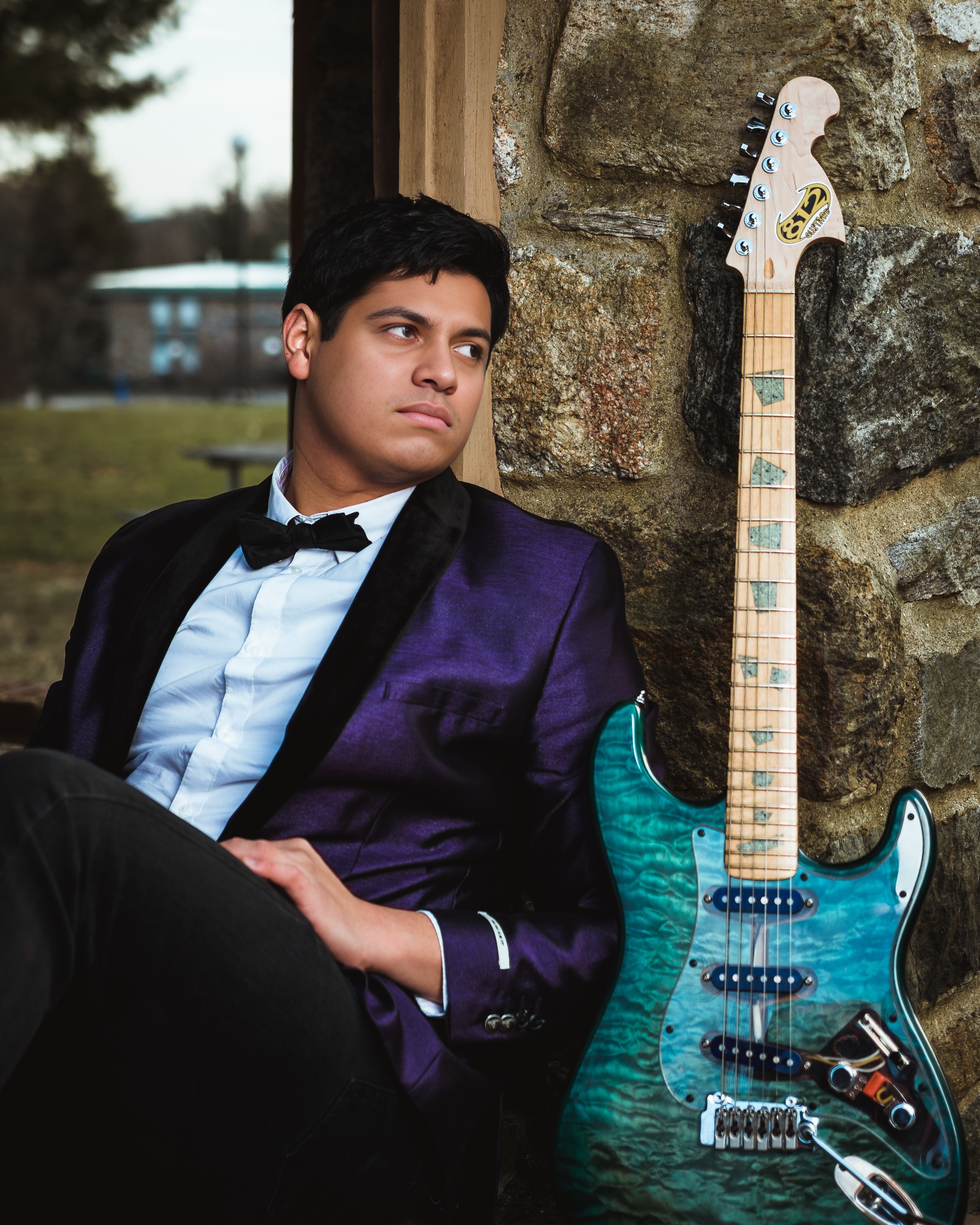When beginner players learn about their first guitar, they will see that the number of frets is discussed in the technical specifications. This may leave players wondering how many frets on an electric guitar and why. The frets set the length of your strings, define the sound’s pitch, and ultimately determine how you can play chords, melodies, and scales.
In this article, Eguitarmania will cover everything you need to know about fret number, spacing, and length. The number of frets, which can range from 12 to 24 frets, determines how high the notes can be played on the guitar. Let’s dive into frets and give an overview of what they do and how they work.
What Are Frets and Why Are They Important?
Frets are the small metal bars running across the fingerboard of an electric guitar, which make up most of the guitar’s neck. Read on and find out everything you need to know about guitar frets.
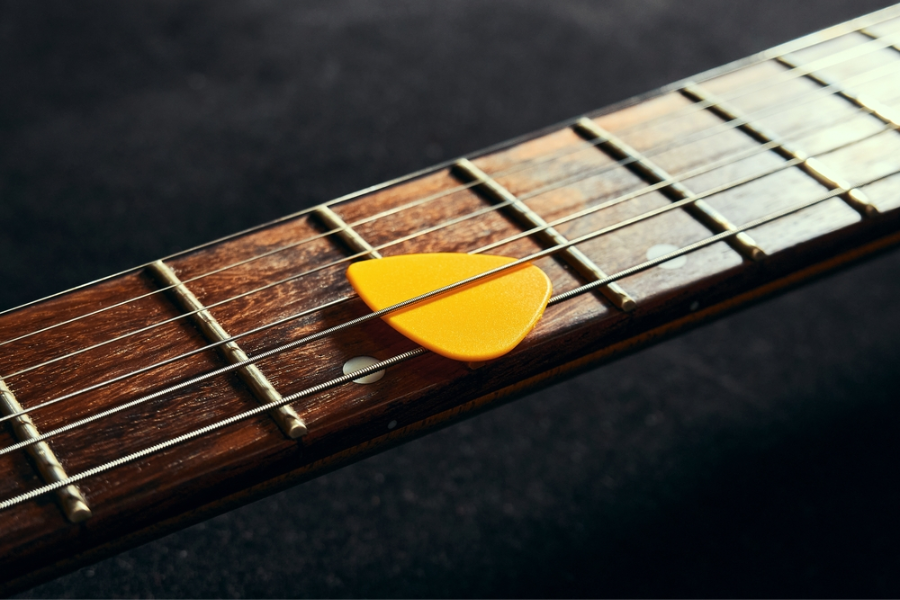
Definition of frets on an electric guitar
With a fretted bass, you play notes on a smooth neck, but with frets, the neck is divided into set pitch intervals. Each fret is equal to one semitone, or “half-step,” in the Western classical scale. This makes it possible to play notes that are exact and consistent.
There is a common misconception that pressing down on a guitar string will touch the metal fret. You could also press the string against the wood or material of the fingerboard between the frets. Nickel metal is the most popular material for frets. The pitch goes up because the string’s moving length goes down.
The role of frets
The role of frets encompasses several key aspects that are essential for both playability and musical expression:
- Guitar Tone: Frets contribute to the guitar’s tone by affecting the vibration of the strings.
- Musical Pitch Precision: Frets helps me play at the correct pitch, hit notes accurately.
- Playability: The size and spacing of frets significantly influence the playability of a guitar. For me, guitars with well-spaced and properly sized frets are just easier and more comfortable to play.
- Facilitating Advanced Techniques: Frets are very important for advanced playing methods like bending, vibrato, hammer-ons, and pull-offs. Without frets, it would be much harder to show feelings and make tones that change quickly.
Understanding Fret Dimensions
Frets come in various widths and heights, each catering to different playing styles and preferences.
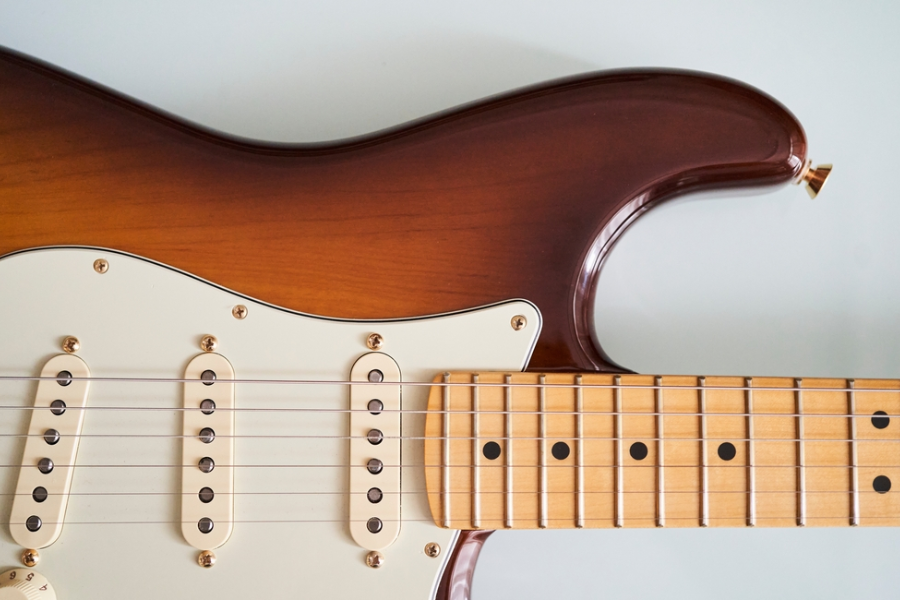
Fret Width and Height
Here are some common fret measurement:
Narrow Tall Frets (6105): Narrow Frets have the right amount of height and width for a variety of playing styles, mostly found on Fender and Gibson guitars.
Vintage Frets (6230): These frets are the thinnest and smallest. You can find them on many older Fender necks. Although they keep the notes steady, this can be hard for lead players who move a lot.
Jumbo Frets (6100): When it comes to size, metal and serious players should get giant frets. They help you play faster and bend notes better, but they might make it harder to play chords right.
Common Fret Materials
Guitarists I know often prefer Nickel-Silver Frets for blues, jazz, and rock music due to their soft, mellow tone. However, they are softer and more prone to wear and tear over time, which might require more frequent replacements.
While stainless steel frets are excellent durability, sustain, and clarity. These frets have a slightly brighter tone and a sharper attack than nickel-silver frets, enhancing the clarity and definition of notes, especially on high-gain settings.
Last but not least, brass frets are less common and unique feel. Brass frets can change the way the guitar looks and sounds. They can emphasize high frequencies, making the sound brighter and more cutting.
How Many Frets On An Electric Guitar?
The number of frets on an electric guitar might affect its adaptability in different musical genres.
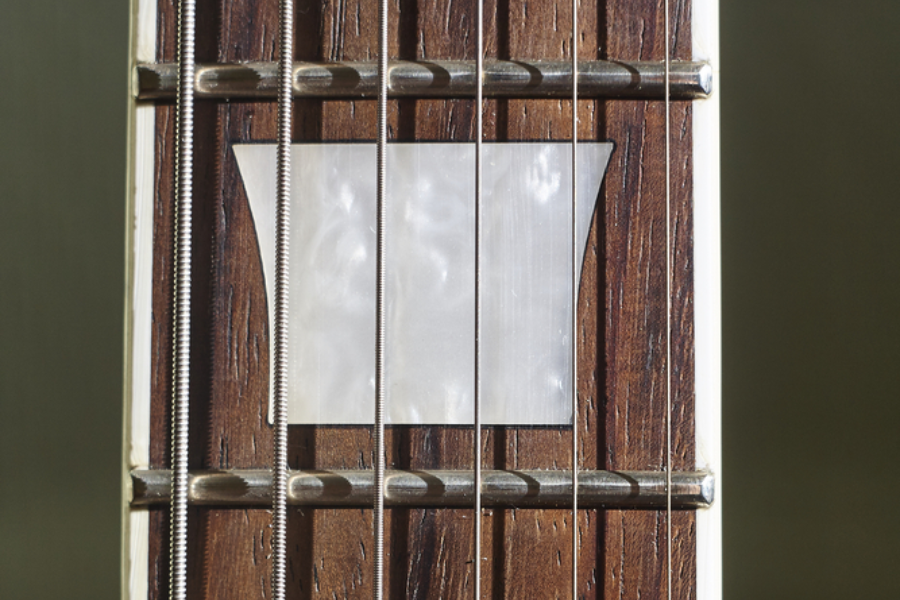
Standard Fret Count
Traditionally, electric guitars have been designed with 22 frets. The 22-fret layout is widely regarded as the standard, especially in classic models like the Fender Stratocaster and the Gibson Les Paul. The 22-fret design ensures that the neck pickup is strategically placed at a point of string vibration that produces a warm and full tone, a characteristic sound of many classic rock and blues songs.
This design offers a comfortable balance, providing a full four-octave range when counting the open strings. It is a thoughtful balance between offering enough range for musical expression and maintaining structural integrity and tonal quality.
Variations in Fret Numbers
The 24-Fret Extension
As music evolved, especially in genres like metal and progressive rock, the demand for a wider range led to the popularity of guitars with 24 frets. Guitars with 24 frets, such as models of the Ibanez RG series, are particularly favored by shredders and lead guitarists for their extended range. This design allows guitarists to reach two full octaves above the open string notes, expanding the possibilities for solos and higher-pitched melodies.
Beyond 24 Frets
Some extended-range guitars may have up to 27 or even 30 frets, used in genres like jazz fusion and experimental rock. While less common, these instruments are often custom-made or specific to genres that require an extensive range of notes.
The Relationship Between Fret Count And Guitar Playability
Choosing the Right Fret Count for You
Let’s explore key considerations to help you pick the ideal fret count for your playing style
| Factor to Assess | 22-Fret Guitar | 24-Fret Guitar |
| Playing Style | For rhythm guitarists and lower-to-mid-neck players. | Improves lead guitar and high-pitched solos and melodies. |
| Tone & Sound Quality | A harmonic sweet spot, often resulting in a warmer tone. | May have a slightly brighter tone |
| Physical Size & Reach | Shorter overall length, Easy | Longer neck |
| Musical Genre | Ideal for blues, rock, jazz, and classic genres. | Preferred in metal, progressive rock, and genres requiring extended solos. |
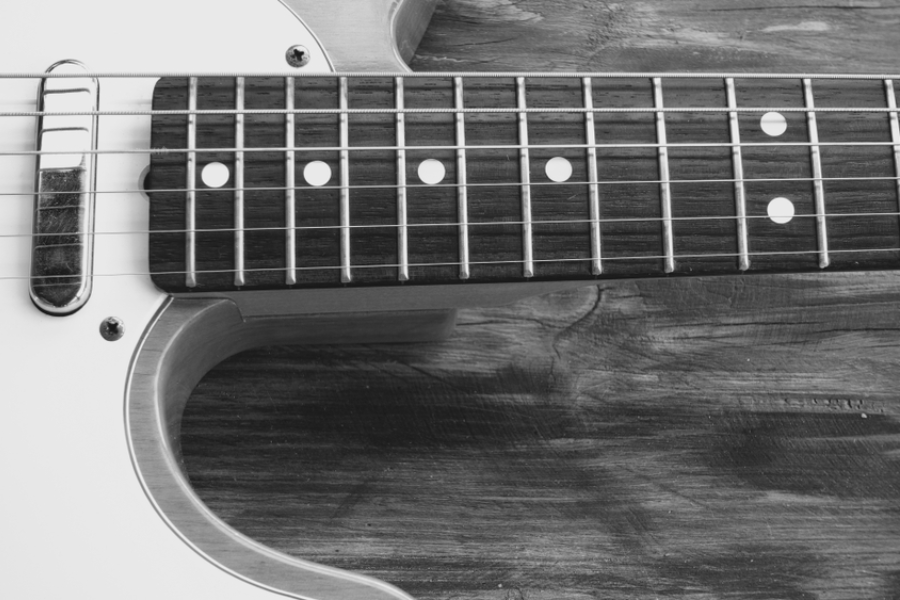
Fret Count and Musical Genres
You can play four octaves on most guitars with 22 frets. Some electric guitars with 24 frets can play more pitches and make leads and higher-pitched melodies simpler.
Changing frets have led to innovative designs like curved fretboards, which chop off the wood between the frets to speed up note bending and vibrato. These new features demonstrate how frets shape the guitar and enable musical expression.
Firstly, I consider the genres I am most passionate about. Nothing beats the experience of trying out different guitars. I spend time playing both 22-fret and 24-fret guitars, paying attention to how each feels, the ease of playing, and the tonal differences.

I often seek advice from more experienced guitarists and music store professionals. They gives different experienced insights based on my personal playstyle which can be extremely helpful.
Final Thought
So, how many frets does an electric guitar have? Electric guitars mainly have more frets, mostly 22 to 24 frets. My best advice is to go to your local guitar shop and test out both acoustic guitar models and electrics to see which feels best in those upper fret ranges.

